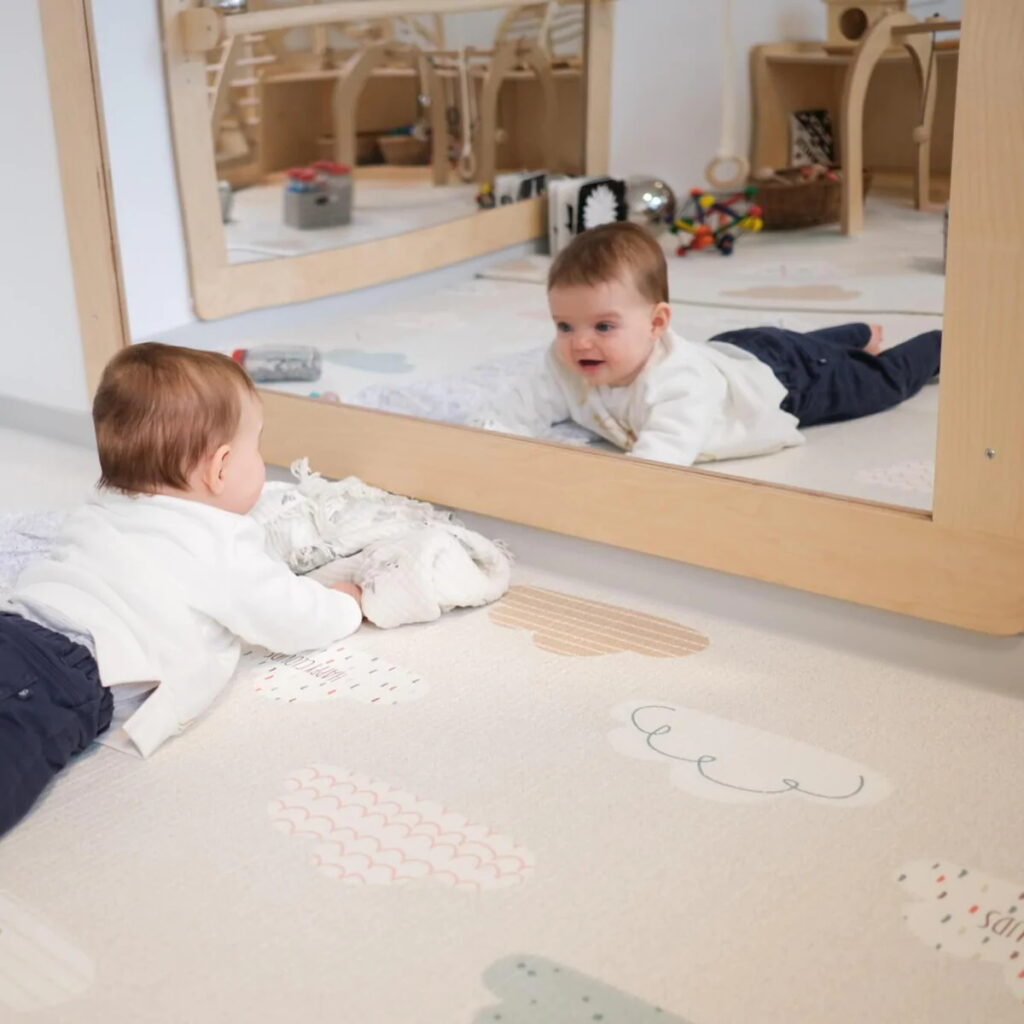A Montessori wall mirror is not only beneficial for you and your little one but will keep your baby occupied and entertained. It will support their cognitive and physical development as they explore all that the mirror has to offer them. A Montessori bedroom wall mirror will also encourage your child to move around and develop a sense of what the mirror is and how their reflection appears.
A Montessori mirror will brighten up your child’s bedroom or nursery, providing it with a sense of depth, making it seem bigger and a little more welcoming. Additionally, there are some pretty nice mirrors that can add a nice touch to any room.
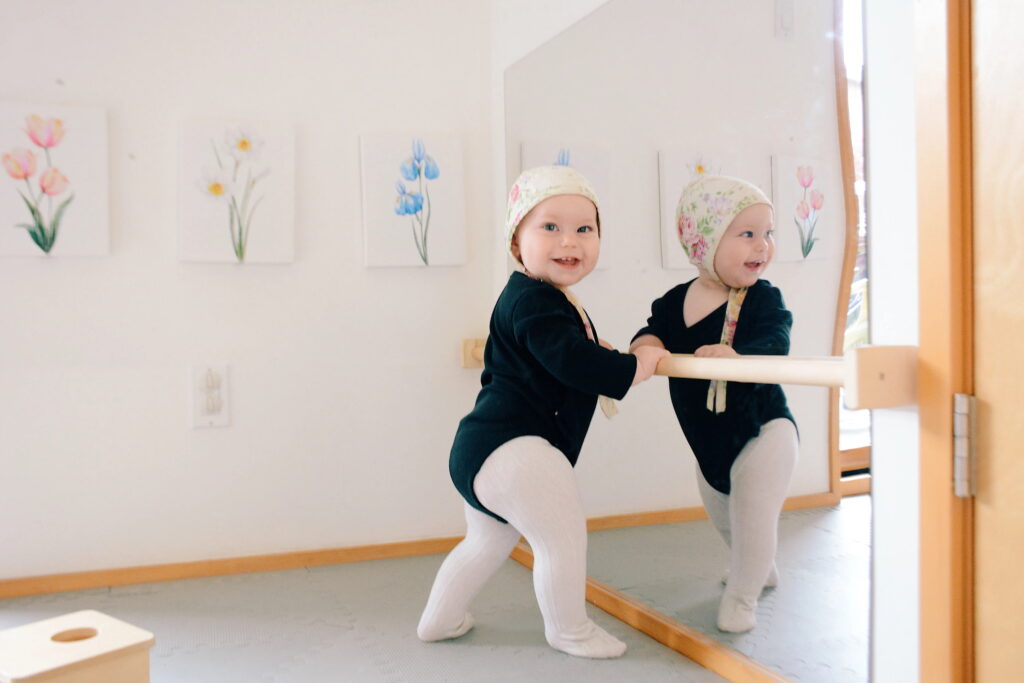
WHAT ARE MONTESSORI BEDROOM, FLOOR AND WALL MIRROR ALL ABOUT?
A Montessori infant mirror is typically a trademark of most Montessori bedrooms, for babies and toddlers alike. Montessori parents and professionals agree that there are many benefits of having a wall mirror in your child’s room even though the purpose of that mirror will change as your child gets older.
There are several types of wall mirrors for you to choose from. Regardless of the one you choose; it shows babies cause and effect due to observing their movements in the mirror. Later it will teach your child to explore their body through visual touch and reaction in the mirror.
REASONS TO GET A MONTESSORI BABY ROOM MIRROR
Now that you know what a Montessori wall mirror is, you probably want to know the reasons for a mirror in your child’s room and what the benefits are. Below are some reasons a mirror could be beneficial for you and your little one.
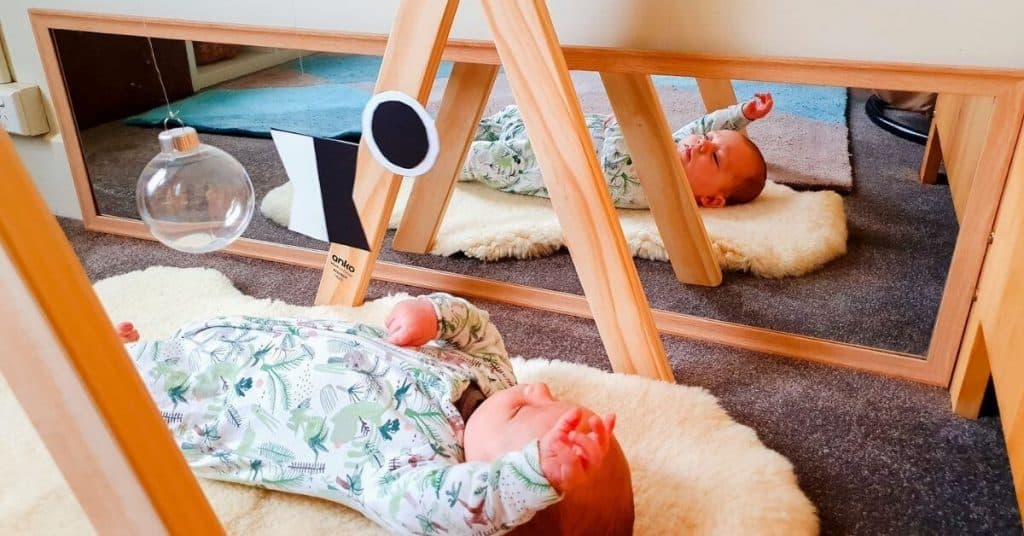
Visual tracking
A wall mirror helps your baby focus on and follow moving objects in their reflection. Mirrors can be great teachers of cause and effect for babies. Mirrors teach babies to watch and track their movements and will help them to become mindful of their reflections. Toddlers will also be able to refine their touch and sight senses through visual and physical interactions with the mirror.
Concentration
Babies are distinctively attracted to lustrous surfaces and a mirror is great at holding a baby’s attention for an extensive amount of time. Your baby can also continue working towards understanding the mirror as a cognitive perception. They will eventually make sense of themselves in relation to the child they see in the mirror.
Promotes Independence
A wall mirror can help babies entertain themselves, which lessens dependence on an adult for entertainment.
Promotes Movement
A wall mirror provides your child stimulating visual feedback around their own movements. It encourages your baby to the try different movements to see how they look, such as waving arms or kicking feet.
Promotes Coordination
Once your baby is moving around, they can crawl towards the mirror on their own, supporting their gross motor movement. You may want to put a bar along the mirror, a few inches off of the wall for your baby to pull themselves up on.
This bar should be about the height of your baby’s chest, right above the waist. The mirror serves as visual inspiration, and your baby will eventually pull up on the bar to admire the baby in the mirror do the same.
Dancers can practice the movements they’ve learned in mirrors in dance studios, and see what they might not feel. This instant response encourages the dancer and your baby to keep trying different things.
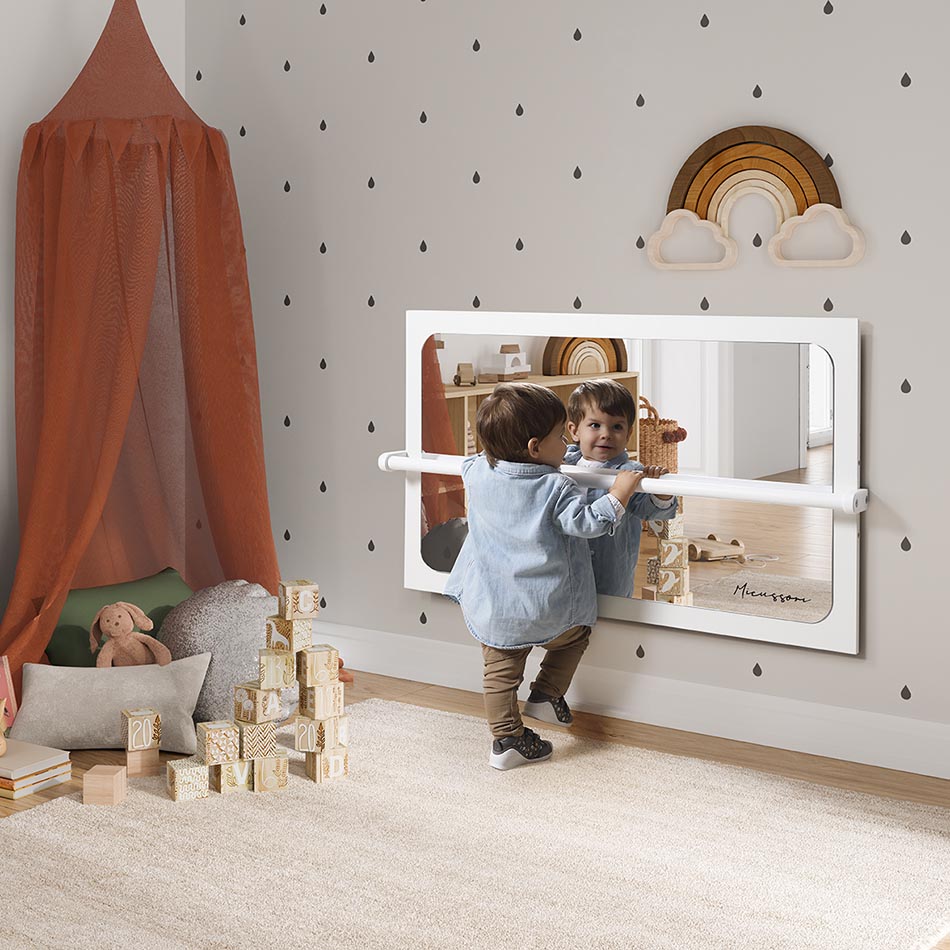
How Will a Wall Mirror Help Your Toddler?
After about 18 months, your toddler will fully understand how the wall mirror works. At this point, they understand that they are looking at themselves when looking in the mirror.
They now can also study the practical uses of a mirror. At this age you may want to swap out the large mirror for one that displays only their body, or the upper half of their body.
The purpose is no longer about visual stimulation but it is important for your toddler to see their own body.
The mirror now supports your toddler’s freedom by helping them to care for themselves. Once you have the mirror situated in your child’s room, you can create a small self-care station close by.
You may place a small brush and towel in the station. Demonstrate to your toddler how to brush their hair while looking in the mirror, and how to use the towel to wipe their face before bed.
You also can show them how to check what they are wearing after getting dressed and explain items like shirt, pants and socks. This encourages your toddler’s journey on the road to independence.
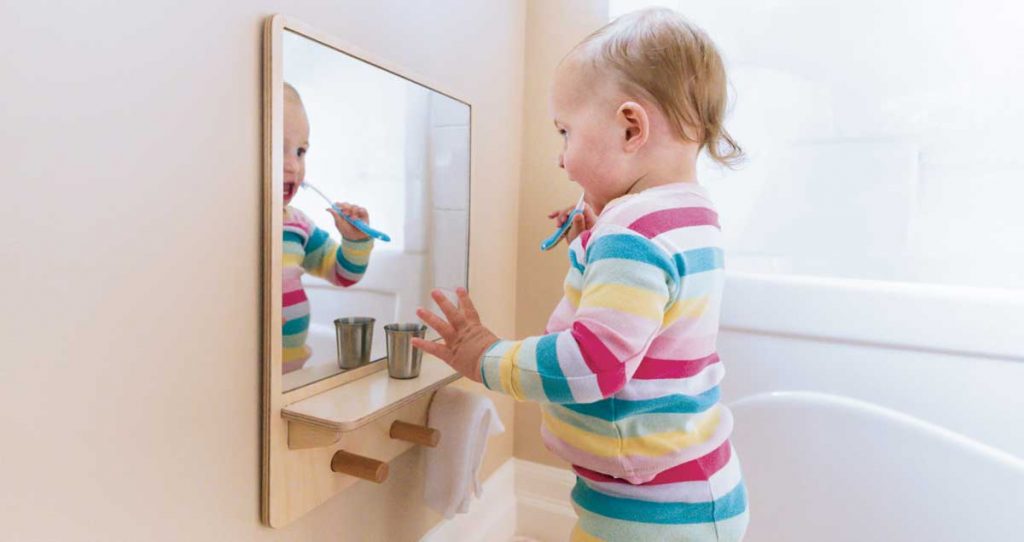
Where to Place your Baby’s Wall Mirror
It is best to place you baby’s wall mirror is in a separate area, away from their bed. For your child’s sense of order, their need to understand that the bed is for sleeping, and another movement area is for play and work. If there is a space limitation, most babies will manage just fine if you have to put the mirror by their bed.
However, some baby’s may be overstimulated by their image and struggle with sleep. If that is the case, you can try to find another solution or area for a mirror.
For the first year or so of your baby’s life, you will want a large wall mirror placed along the floor line.
This will fill your baby’s visual field and deliver the biggest influence on their experience with the wall mirror. If the child moves forward, they should be able to see themselves doing just that.
If possibly, buy a mirror that your child can grow with. If the mirror you choose is too small, the child will outgrow it too quickly
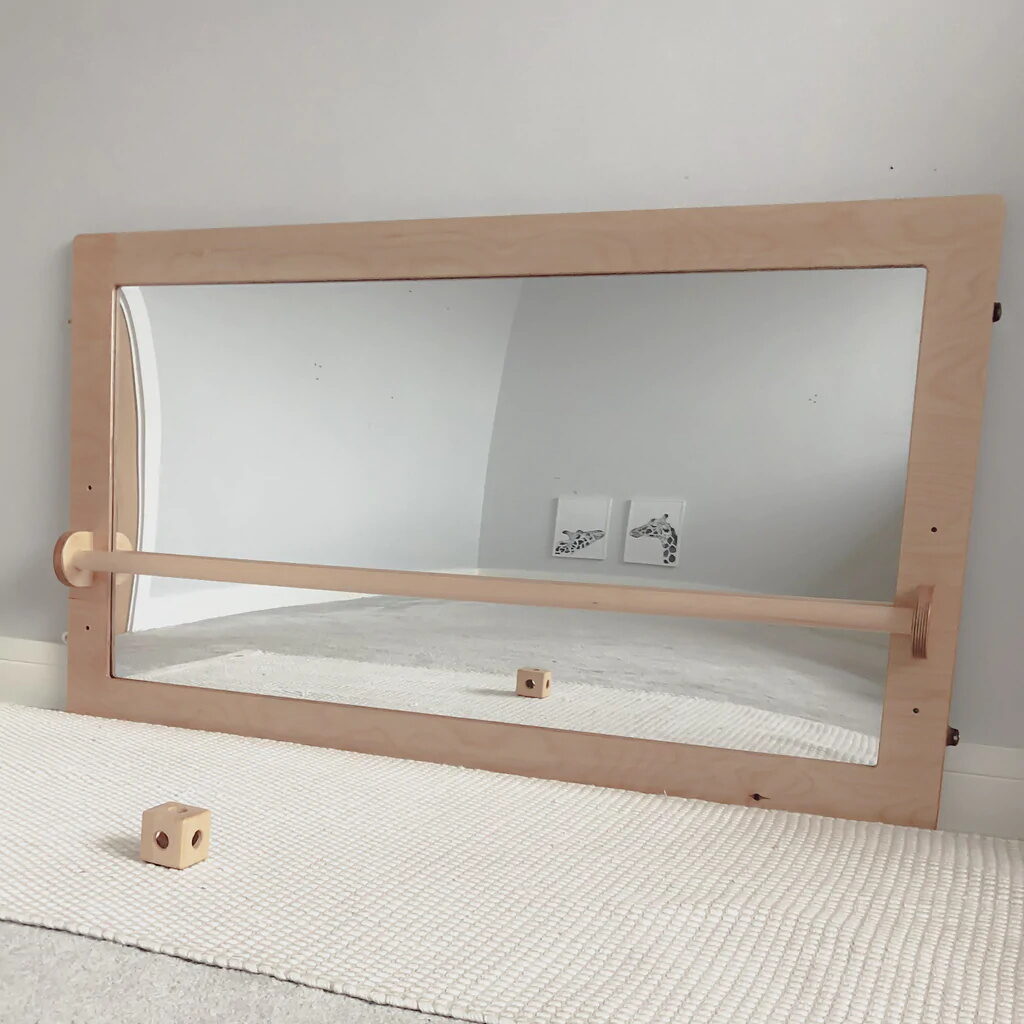
Final Thoughts
A Montessori wall mirror is a beautiful and simple addition to your child’s bedroom, no matter what age they are.
It serves different purposes at different phases of life and supports your child’s development in many ways as well as recognizing and understanding their reflections.
Mirrors are a great way to keep your child entertained and will encourage interactive play and healthy movement.

